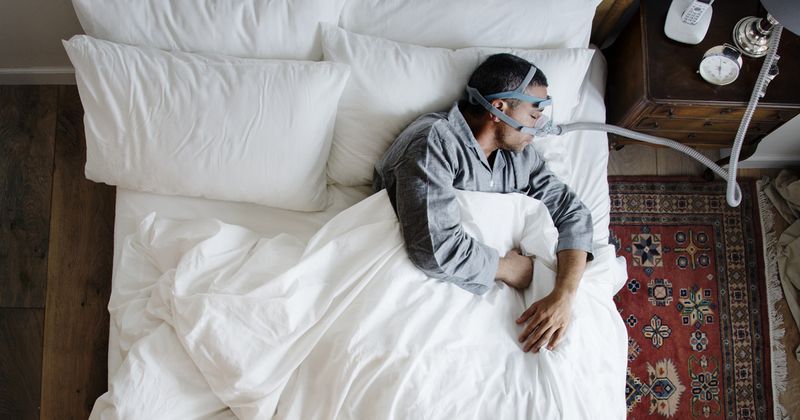OSA traits, severity differ according to common demographic factors
Key takeaways:
- Patients with obesity, male sex, older age and Chinese ancestry had high sleep apnea severity.
- For each demographic, the prevalence of three sleep apnea endotypic traits varied.
The prevalence of three pathophysiological traits used to identify patients with sleep apnea differs according to BMI, sex, age and race/ethnicity, according to study results published in Annals of the American Thoracic Society.
“The present community-based study shows that endotypic traits for sleep apnea vary with age, sex, race/ethnicity, and obesity and provides the largest collection of data that describes differences in predominant OSA etiologic pathways across population subgroups and with obesity,” Scott A. Sands, PhD, assistant professor of medicine in the division of sleep medicine at Harvard Medicine School, and colleagues wrote. “Consequently, subgroups of the population may be expected to respond differently to treatments that target different disease mechanisms and may feasibly exhibit different susceptibility to the adverse outcomes of sleep apnea, findings that may help inform endotype-focused precision medicine interventions.”

In this study, Sands and colleagues evaluated 1,971 patients (mean age, 68.5 years; 47% men) from the Multi-Ethnic Study of Atherosclerosis with polysomnography data to understand how endotypic traits of sleep apnea change based on demographic factors (BMI, age, sex and race/ethnicity) to impact the severity of the disease.
Each demographic factor was evaluated for its relation to apnea-hypopnea index (AHI), measured as the number of events per hour, in regression models. These models also helped to see how each factor was linked to the three studied endotypic traits of sleep apnea: pharyngeal collapsibility, dilator muscle compensation and loop gain (ventilatory control sensitivity).
In terms of sleep apnea severity, researchers found that categories within each demographic were linked to higher AHI: obesity with an additional 19 events per hour per 11 kg/m2, male sex with an additional 13 events per hour compared with women, older age with an additional seven events per hour per 20 years, and Chinese ancestry with an additional five events per hour compared with white ancestry and adjusted for obesity. Black patients had lower disease severity compared with white patients with a decrease of five events per hour.
Researchers further observed that higher sleep apnea severity in each of the demographics was explained by varying endotypic traits.
All four of the demographic factors had a link to increased pharyngeal collapsibility: obesity, (+0.4 [standard deviation (SD)]), male sex (+0.86 SD), older age (+0.37 SD) and Chinese ancestry (+0.57 SD). Based on “mediation analyses [that] described the degree to which endotypic traits explained the greater AHI” found in each factor, researchers found that this specific endotypic trait significantly mediated elevated disease severity in Chinese ancestry (87%), male sex (52%) and age (39%), whereas it only modestly mediated obesity (17%).
“Because of greater collapsibility, participants of Chinese ancestry may require stronger anatomical interventions, and nonanatomical interventions may be less efficacious,” Sands and colleagues wrote.
Notably, researchers observed diminished collapsibility (–0.3 SD) in Black patients vs. white patients.
Reduced compensation was found in fewer demographics, with only male sex-related raises in disease severity related to this trait (–0.4 SD). Researchers found a smaller reduction in this compensation when adjusted for testosterone.
In terms of elevated loop gain, both obesity (+0.38 SD) and older age (+0.15 SD) were linked to this trait, which only “modestly mediated” higher sleep apnea severity in both factors (obesity, 17%; age, 21%), according to researchers. However, when corrected for cardiac or renal dysfunction, researchers found that older age and this endotypic trait did not have as strong a link to each other.
This endotypic trait was also higher in Black patients (+0.29 SD), according to researchers.
“The elevated loop gain and less severe collapsibility in Black participants implies greater potential for loop gain-lowering interventions but reduced efficacy of mechanical interventions, providing an opportunity for novel therapy,” Sands and colleagues wrote.
Researchers conducted this analysis again in two more cohorts to see if their findings were applicable in more than one cohort and found that the above findings were consistent.
“Our data suggest that obese, older, male, and Black patients might be most susceptible to residual sleep apnea with therapies that solely address anatomic disease mechanisms,” Sands and colleagues wrote. “Notably, higher loop gain in obese patients may contribute to the failure of noncontinuous positive airway pressure anatomical treatments; targeting loop gain and collapsibility together might be of value in obese patients.”
